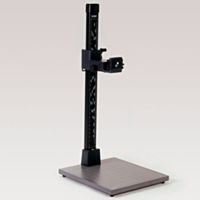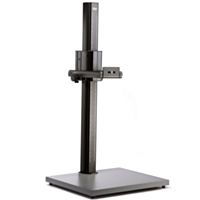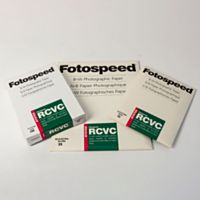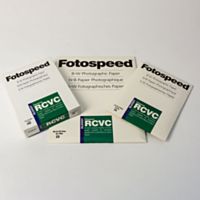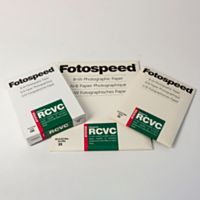The Landscape Photographers Calendar: what to shoot in January

Tony Worobiec is a Fellow of the Royal Photographic Society and one of our Fotospeed photographers. He has won awards for photography both in the UK and internationally, and has authored 16 books. In this blog post, adapted from his RPS workshop, “The Landscape Photographers Calendar", Tony tells you what to look out for in January. Tony uses Fotospeed’s Platinum Baryta and Platinum Matt.
-->
Tony Worobiec is a Fellow of the Royal Photographic Society and one of our Fotospeed photographers. He has won awards for photography both in the UK and internationally, and has authored 16 books. In this blog post, adapted from his RPS workshop, “The Landscape Photographers Calendar", Tony tells you what to look out for in January. Tony uses Fotospeed’s Platinum Baryta and Platinum Matt.
You can find out more about Tony here.
Each month of the year offers wonderful opportunities for taking great photographs, without the need to travel great distances.
The Landscape Photographer’s Calendar is designed to inspire and encourage you to value your own immediate environment, taking note of how the landscape will be changing month by month and how you can make the most of it with the resources you have to hand in pastoral, agricultural, coastal, industrial and urban locations.
You will be encouraged to consider 6 or 7 do-able projects; in some, case-specific techniques will be discussed which best exploit that month’s landscape, covering coastal and inland, colour and monochrome, macro and panoramic.
Weather of course plays a big part, so how to overcome certain difficult conditions will be carefully explained. Some of the ideas and techniques will be unique to that specific month, although others will be transferable. For example, while photographing in rain is discussed in February, (as this tends to be our wettest month), that doesn't mean that one cannot take stunning rain shots in July.

Snow and the minimalist landscape
Could we start with a better month than January? Yes, it is cold and frequently wet, but of course that is where the opportunities lie. Moreover, this is the month we are most likely to encounter snow, and I doubt there is a landscape photographer on the planet who isn't excited by the white stuff! Snow can simplify a landscape quite dramatically and is able to eradicate detail, presenting the viewer with a wonderfully minimalist landscape. The depth of snow of course varies; living in the south of England, we rarely get much more than a smattering, but even that is sufficient to create a wonderfully transformed scenario. It is a personal thing, but I prefer shooting under a grey sky as the light tends to be much more nuanced… and threatening.
One also needs to be aware of just how easily the camera’s metering system can be fooled by white snow. It is normally programmed to capture a notional 18% grey, which in these conditions often results in under-exposure. One way to avoid this is to set your camera to Manual and over-expose by two thirds of a stop. It also helps to be aware that the detail in the snow is only clearly visible when you are experiencing blue skies; the flatter the light, the more minimalist the landscape will appear. If you are seeking to achieve a graphic effect, try shooting cultivated fields that have just a light covering of snow. With the rhythmic rill of the fields still evident, the results can prove stunning.

Celebrate skeletal trees in winter mists
At this time of year, Winter mists can sometimes linger all day, adding a strange beauty to defoliated trees. If you live on relatively low land, these mists might not be quite so obvious; what you might be seeing is a very low and claustrophobic stratus cloud but as soon as you travel to a slightly higher elevation, you will quickly encounter mist. These conditions are truly transformational, particularly if you are able to track down a wonderful area of deciduous woodland. Fog introduces a visual phenomenon known as ‘aerial perspective’ which causes distant objects to appear considerably lighter than the foreground.
Once again, look for simple graphic effects. Find an interesting group of trees in the foreground and don't worry too much about the background. Normally it is extremely difficult to see worthwhile designs in heavily wooded areas, but the mist has the capacity to greatly simplify the composition. One cautionary note, do check the front element of your lens on a regular basis as droplets of water frequently appear in these conditions. It is a matter of personal choice, but images such as these work equally well in colour or in black and white. Either way, this is a genre that particularly suits telephoto lenses.

Exploiting the rich winter light
By way of contrast, January can also provide us with some truly magnificent blue skies. The sun gets about as low as it can get in early January, resulting in a richness of light that cannot be matched. Also, due in part to the cold, there is very little evidence of dust in the atmosphere which causes the sky to look particularly blue. So how is best to exploit this phenomenon you may well ask? Blue is one of the primary colours and if you do not use it with care, it can overwhelm any other colours introduced into the composition. If, however, you introduce an element of orange into the composition, as orange is the opposite colour to blue on the colour wheel, the results can be spectacular.
Winter of course is a time when our fields are bare – there are no floral displays, so what can provide us with this spectacular splash of orange? In a word – sandstone! Sandstone features can be found inland, but our coast is rich in truly magnificent sandstone features that look truly awesome in a rich winter light. In order to intensify the colours, why not use a polarising filter?

The beauty of ice
Without doubt, January is our coldest month, but that of course introduces a whole host of opportunities. As a simple example, look to your feet and you will discover ice-formations revealing a stunning beauty. Anticipating this is very simple; check your weather app, or listen to the evening weather forecast. If sub-zero over-night temperatures are predicted, set your alarm nice and early so you can get out there before the sun rises. I make this point because the effects you can capture pre-dawn are noticeably different from those you are likely to see once the sun appears. Ice photographed pre-dawn retains an over-all cold blueness which introduces a uniquely abstract element to the image, however the moment the sun appears in the sky, a ring of orange is introduced.
Finding interesting locations is never a problem; your only challenge is getting there before the dog-walkers tread over the delicate ice patterns. Finally, the most fascinating elements tend to be small, so how about packing your macro lens before you set out? If you wish to ensure that all the elements are sharply focused, select a relatively small aperture, and try to ensure that the plane of the camera is parallel to the surface of the ice.

Murmuration of starlings
A feature of January that is frequently overlooked is the spectacular murmuration display of starlings; surprisingly, such displays are more common than you think. Details of where such events are likely to occur in your area are available on the internet. Try the RSPB website.

Taking advantage of the flooded landscape
An occurrence that is becoming more common is flooded fields and pastures. These can present the landscape photographer with some excellent opportunities.
Want more ideas on how to improve your photography and prints? Check out the rest of our blog, or get in touch to see how Fotospeed can help!
If you would like to stay on top of all the latest information from Fotospeed don't forget to sign up to our Newsletter.



